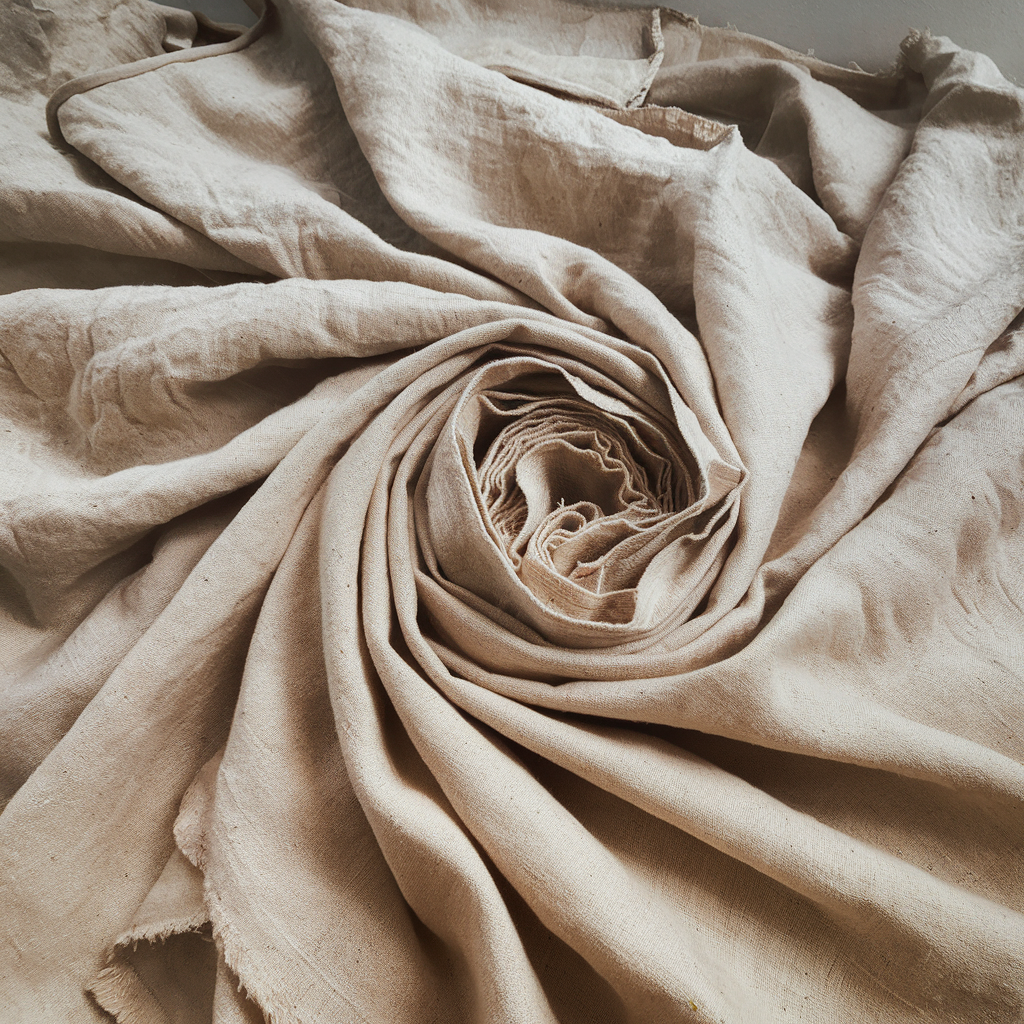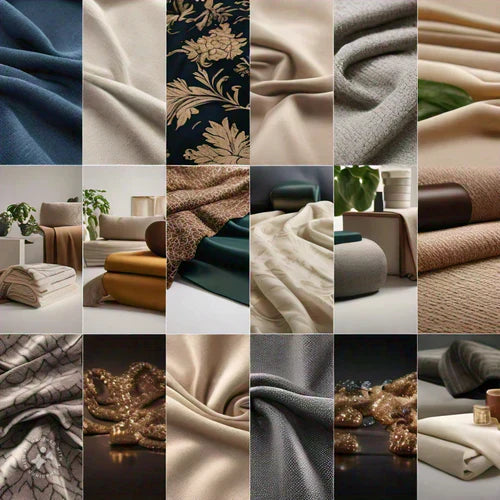Linen fabric, a flax-based textile celebrated for its breakability, sustainability, and strength, has been preferred across the countries. From antiquated Egyptian tombs to the modern Spartan design, linen exhibits a timeless charm that insists on both innovation and tradition. Well known for its versatility, linen fabric is used in everything from high-end fashion to household essentials like linen fabric by the yard for custom products and fabric shower liners.
In this guide, we explore the world of linen fabric - from its gripping origins to its coeval applications. By addressing the common questions like this linen shrink, and what linen fabric is by the end, you will understand linear continuous to the top choices for those functionality-seeking styles and sustainability.

What Is Linen Fabric?
Linen is a textile made from flax plants (linen Usitarissimum). Illustratious for its persistence and fragile fabric that stands out for its natural luster and apparent texture. Linen is basically used for garments, home textiles, and especially items like fabric shower curtain liners, thanks to its water resistance and study properties.
The Chronology Of Linen Fabric
Linen is one of the long-lived known fabrics with its origins dating back over 6000 years. The ancient Egyptians admire linen for its strong matches and continuity, using it for clothing, woolen shrouds, eco coffins, and even currency
By the Middle Ages, leaders had become four of the most renowned across Europe, particularly in Ireland and Belgium, which became renowned for producing high-quality linen. The creation of the spinning wheel in the 14th century helped the lining production and made it more accessible production to households and industries alike.
In today's world, the line has evolved from luxury items to sustainable fabric, which is practical and used for various purposes, including different types of crafts with linen fabric by the yards, creating eco-friendly home accessories, and designing fashion pieces.

Production Process Of Linen Fabric
The production of linen involves several intricate steps:
- Harvesting: Flax plants are harvested when they are mature. The entire plant is pulled from the ground rather than cut to preserve the length of the fibers.
- Retting: This process involves soaking the harvested flax stalks in water or dew to separate the fibers from the woody inner stalks. Retting can take several days to weeks, depending on environmental conditions.
- Breaking: After retting, the flax stalks are crushed to break up the woody parts.
- Scutching: The broken stalks are then beaten to remove the remaining woody pieces, leaving behind the long fibers.
- Hackling: The fibers are combed out to separate shorter fibers from longer ones, which are then spun into yarn.
- Weaving: The yarn is woven into fabric using traditional looms or modern weaving machines.
This labor-intensive process contributes to linen's higher cost compared to other fabrics like cotton.
Why To Choose Linen Fabric?
- Permanence and life span: Linear is one of the incomparable natural fibers, making it ideal for heavy-use items like tablecloths, shower liners, curtains, etc.
- Comfort and breathability: Leading natural fiber allows for optimal air circulation on breathable fabric shower curtain liners that mildew and resist.
- Eco-friendly nature: What makes linen a sustainable choice the flax plant requires minimal water in pesticides. Its biodegradability enhances its appeal to eco-conscious consumers.
Linen Fabric By The Yard: Creativity On Your Peak
For fashion designers and enthusiasts, acquiring linen fabric by the yard opens a world of possibilities. From traditional clothing to unique home design, linen offers unmatched versatility.
Some of the popular uses include:
- Clothing: Create feathery dresses, shirts, or pants.
- Home decor: Pillowcases, craft curtains, and upholstery.
- Supersourcing projects: Use linen for quilting, embroidery, or any other creative wall hangings.
- Home Textiles: It is popular for bed linens, tablecloths, napkins, curtains, and upholstery because of its absorbency and durability.
- Crafts and Art: Linen canvas is favored by artists for painting due to its strength and texture.
Linen's aesthetic appeal makes it a popular choice among designers looking for a natural look with a touch of elegance.

Anticipating Advancement: Linen Fabric In The Modern Era
Variations in textile production are blending linen with other sustainable things like organic cotton and bamboo, to create hybrid fabrics that combine the best properties of each.
With the enhancement in technology, linen fabric is inherent with smart features like temperature regulation, moisturizer-wicking properties, and antibacterial finishes
Attempts to optimize linen production are making it more affordable, allowing more people to enjoy its advantages without compromising on the quality of the material.
Care Instructions For Linen Fabric
Caring for linen requires some attention but can ensure longevity:
- Washing: Linen can be machine-washed or hand-washed in cold or warm water. It is advisable to avoid high temperatures as they may cause shrinkage.
- Drying: Air drying is preferable; however, if using a dryer, a low heat setting should be employed.
- Ironing: While ironing is not always necessary due to its natural texture if desired, it should be done while the fabric is slightly damp at a medium temperature.
- Storing: Store linen in a cool, dry place away from direct sunlight to prevent fading.

Overall, proper care can maintain linen's beauty and functionality over time
Frequently Asked Questions (FAQ)
1. How To Draw A Straight Line On Fabric?
To draw a straight line on a LinkedIn fabric, follow these steps:
- A) Use of fabric chalk or pencil.
- B) Measure with a ruler or measuring tape.
- C) Secure the fabric with weights to prevent it from shifting.
2. What Fabric Is Linen?
Linen is a natural purest form of fabric derived from the flax plant. It's celebrated for its persistence, breathability, and eco-friendly nature, Making it a standout material in both home decor and fashion.
3. What Is Lighter Fabric, Cotton Or Linen?
Well, both are lighter in weight, but linen is generally lighter and more breathable than cotton due to its looser weave.
4. Does Linen Fabric Shrink?
Yes, if the fabric is washed in hot water or not prewashed, it can shrink. To prevent it from shrinkage, wash it in cold water and air dry or use a low heat setting in the dryer.



